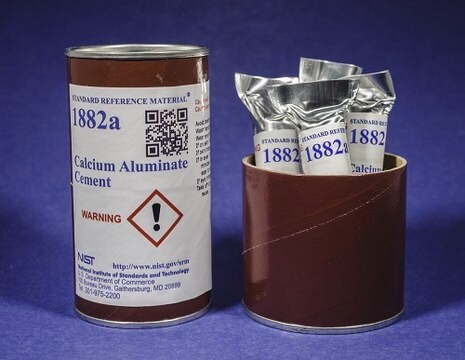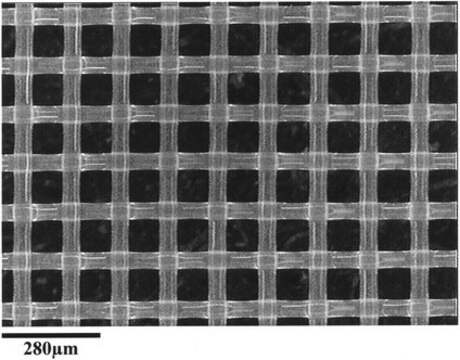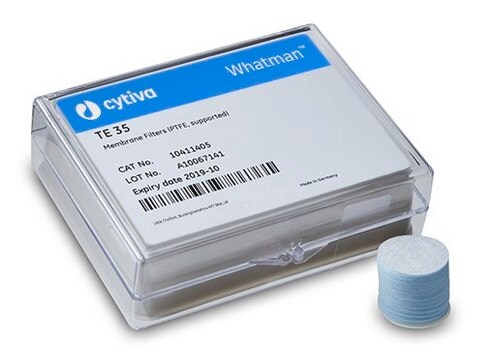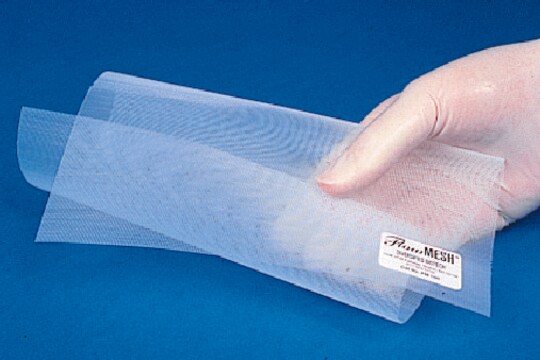NY8002500
Nylon Membrane Filter, 80.0 μm Pore Size
Millipore, filter diam. 25 mm, hydrophilic
Synonym(s):
Nylon Net Filter
Sign Into View Organizational & Contract Pricing
All Photos(2)
About This Item
UNSPSC Code:
40161507
eCl@ss:
32031602
NACRES:
NB.24
Recommended Products
material
Nylon membrane
plain filter
white filter
sterility
non-sterile
feature
hydrophilic
manufacturer/tradename
Millipore
parameter
100 °C max. temp. (curling may be seen at temperatures above 75°C)
filter diam.
25 mm
thickness
75 μm
pore size
40 % porosity
80.0 μm pore size
shipped in
ambient
General description
Filter Code: NY80
Filter Type: Net filter
Nylon filters are compatible with a broad range of solvents. Two types are available: 1) Nylon Membrane Filters with pore sizes ranging from 0.20 to 1.2 µm, and 2) Woven Net Filters with mesh openings ranging from 5 to 180 µm.
Our 5 µm Nylon Woven Net Filter (NY054700) is commonly used in the automotive industry for cleanliness analysis.
Features & Benefits:
•Wide range of pore sizes available
•Resistant to aggressive solvents
Applications:
Particle Removal and Clarification; Solvent Filtration; Particle Analysis; Paint Monitoring; Automotive Cleanliness Analysis
Our 5 µm Nylon Woven Net Filter (NY054700) is commonly used in the automotive industry for cleanliness analysis.
Features & Benefits:
•Wide range of pore sizes available
•Resistant to aggressive solvents
Applications:
Particle Removal and Clarification; Solvent Filtration; Particle Analysis; Paint Monitoring; Automotive Cleanliness Analysis
Application
- Collection of algae and cells
- Particle analysis
- Large particulate filtration
- Toxicology and drug screening on C. elegans and zebrafish
- Background filter for particle imaging systems
- Prefiltration of solvents
Paint monitoring
Storage Class Code
10-13 - German Storage Class 10 to 13
Certificates of Analysis (COA)
Search for Certificates of Analysis (COA) by entering the products Lot/Batch Number. Lot and Batch Numbers can be found on a product’s label following the words ‘Lot’ or ‘Batch’.
Already Own This Product?
Find documentation for the products that you have recently purchased in the Document Library.
Raphael Hesse et al.
Acta neuropathologica communications, 7(1), 214-214 (2019-12-22)
Degeneration of synapses in Alzheimer's disease (AD) strongly correlates with cognitive decline, and synaptic pathology contributes to disease pathophysiology. We recently observed that the strongest genetic risk factor for sporadic AD, apolipoprotein E epsilon 4 (APOE4), is associated with exacerbated
Our team of scientists has experience in all areas of research including Life Science, Material Science, Chemical Synthesis, Chromatography, Analytical and many others.
Contact Technical Service






